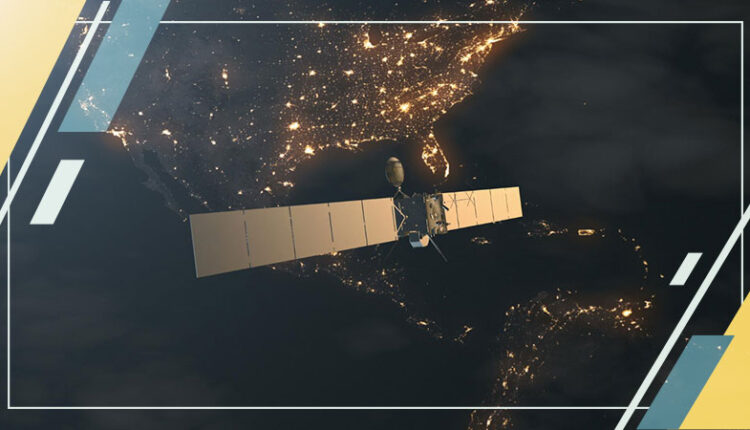We frequently come across news on television about the launch of numerous satellites into space. The launch of satellites has shifted from large to small-scale models. Have you ever pondered the reason for this trend towards compact satellites? Furthermore, what purposes do these small satellites serve, and what are they constructed for? Let’s delve into the world of these tiny satellites and understand their vital role in space exploration.
What is a Small Satellite?
A small satellite, also known as a miniaturized satellite, small spacecraft, or smallsat, is a satellite of low mass and size, usually under 1,200 kg (2,600 lb). These satellites are built small to reduce the massive economic cost of launch vehicles and the costs associated with construction. They are particularly useful for gathering scientific data, radio relays, and other purposes. Small satellites can be further categorized based on mass, with the “small” category typically referring to satellites with a mass ranging from 601 to 1,200 kg.
Types of Small Satellites
Smallsats can be classified into different types based on their size and mass, each serving specific applications. The main types of smallsats are listed below:
1. Minisatellite:
- Wet mass between 100 and 500 kg
- These satellites are used in earth observation, communication, weather assessment, navigation, and disaster management.
2. Microsatellite:
- Wet mass between 10 and 100 kg
- Microsatellites are used for various purposes, such as scientific research, remote sensing, and technology demonstration.
3. Nanosatellite:
- Wet mass between 1 and 10 kg
- These satellites are typically used for environmental monitoring, geographical mapping, and other non-military purposes.
4. Picosatellite:
- Wet mass between 0.1 and 1 kg
- Picosatellites are suitable for specific research and technology demonstration purposes due to their small size and mass.
5. Femto Satellite:
- Wet mass between 10 and 100 grams
- These types of satellites are primarily used for specialized applications that require extremely small and lightweight satellite platforms.
How are Small Satellites Making a Difference?
Small satellites have significantly impacted various domains, including remote sensing, scientific research, education, and commercial applications. They have revolutionized Earth observation and environmental monitoring, democratized access to space exploration, and contributed to scientific research in fields like solar physics and space weather monitoring.
Their compact size and advanced technology enable cost-effective and efficient data collection for various scientific and commercial purposes. These satellites have also opened up space exploration to academic institutions and students. Missions such as Aalto-1 and AAUSat-2 have demonstrated the potential of smallsats in educational settings.
They are instrumental in the NewSpace revolution, offering opportunities for government leaders, scientists, entrepreneurs, and enthusiasts to explore the New Space Age. Commercial applications, such as filling gaps in satellite coverage, have also seen the use of smallsats. Their versatility and effectiveness highlight their pivotal role in shaping the future of space technology and exploration.
Successful Stories of Small Satellite Missions and Their Impact
The significant impact of the three primary small satellites is explained below:
1. ABEX
The Alabama Burst Energetics eXplorer (ABEX) CubeSat Mission is a 12-U CubeSat scientific and educational initiative. This small satellite mission aims to examine gamma-ray bursts (GRB) with the use of spectral analysis and localization of joint gravitational-wave GRB mergers through wavefront timing analysis.
This CubeSat uses a novel instrument suite of X-ray and gamma-ray detectors onboard the compact 12-U CubeSat. ABEX will work jointly with NASA’s gamma-ray missions to localize these events via wavefront timing with high accuracy and rapid response times.
2. Aditya-L1
The Aditya-L1 mission is the first space-based mission satellite designed to study the Sun. This small satellite launch allows satellites to access magnetic storms and solar radiation before they are affected by Earth’s magnetic field and atmosphere.
The mission aims to provide real-time observations of solar activities and their effects on space weather. On January 6, 2024, Aditya-L1 accomplished the process of halo-orbit insertion (HOI). Aditya-L1 is set to operate for 5.2 years, studying the sun and solar phenomena around Earth and contributing to the study of explosive energy release and electron acceleration during impulsive phases of solar flares.
3. SSLV
In February 2023, the Small Satellite Launch Vehicle (SSLV), in its second developmental flight, launched three satellites into their intended orbits . The vehicle, developed by ISRO, can launch smallsats of up to 500 kg into low-earth orbits on a ‘launch-on-demand’ basis.
The vehicle, designed with three solid stages and a velocity trimming module based on liquid propulsion, can launch mini, micro, or nanosatellites. The SSLV-D2 carried EOS-07, Janus-1, and AzaadiSAT-2 satellites, integrating scientific payloads onboard.
Wrap Up
Small satellites have revolutionized space exploration, enabling cost-effective and efficient solutions for a wide range of scientific, commercial, and technological industries. Their versatility, agility, and innovative capabilities have opened new frontiers in Earth observation, telecommunications, scientific research, and more.
These satellites have the potential to understand the universe and can address real-world challenges on Earth. With ongoing investment and collaboration, the future of these satellites appears bright, with continued advancements and breakthroughs in the realm of space exploration.


